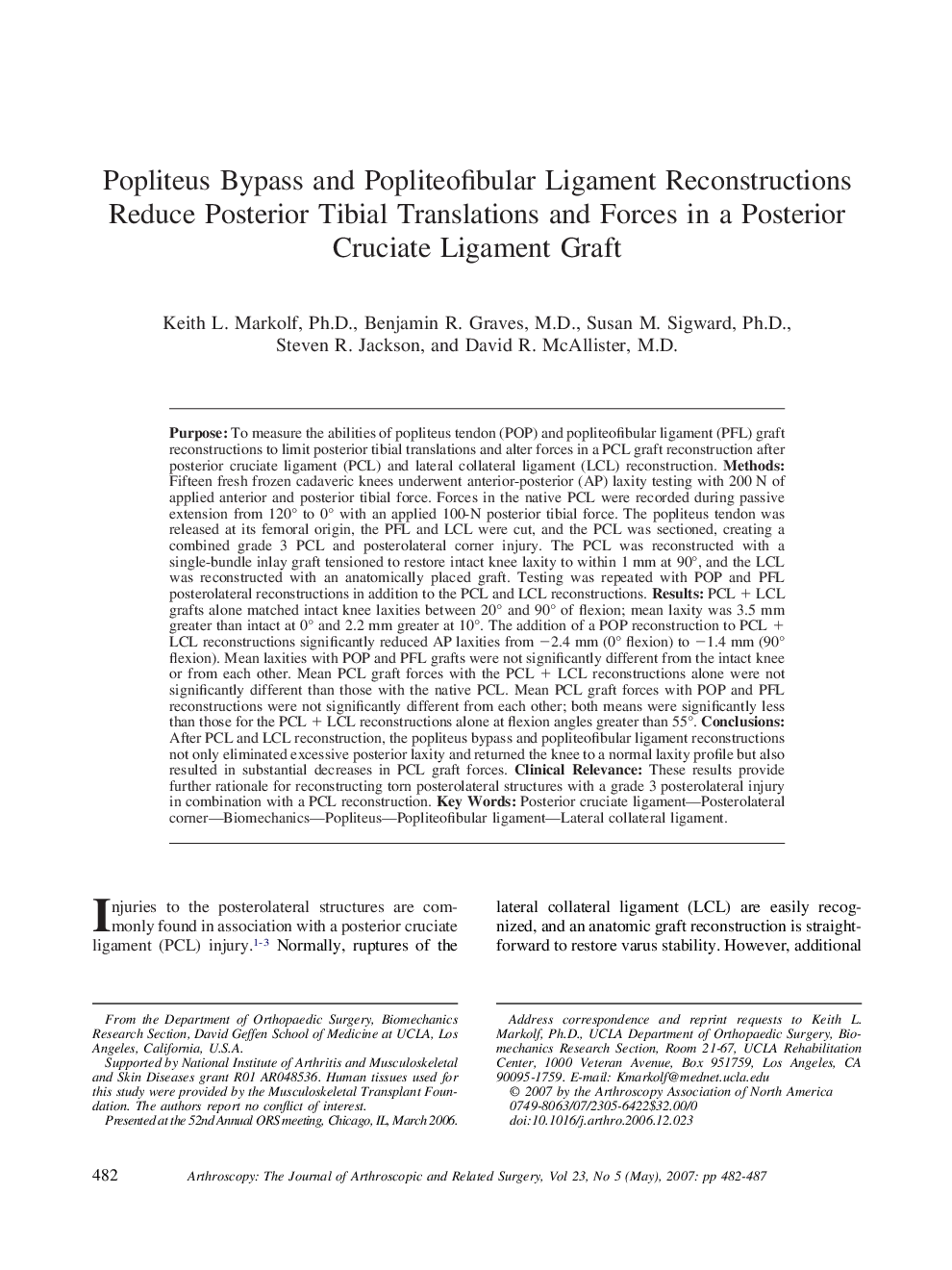| Article ID | Journal | Published Year | Pages | File Type |
|---|---|---|---|---|
| 4047536 | Arthroscopy: The Journal of Arthroscopic & Related Surgery | 2007 | 6 Pages |
Purpose: To measure the abilities of popliteus tendon (POP) and popliteofibular ligament (PFL) graft reconstructions to limit posterior tibial translations and alter forces in a PCL graft reconstruction after posterior cruciate ligament (PCL) and lateral collateral ligament (LCL) reconstruction. Methods: Fifteen fresh frozen cadaveric knees underwent anterior-posterior (AP) laxity testing with 200 N of applied anterior and posterior tibial force. Forces in the native PCL were recorded during passive extension from 120° to 0° with an applied 100-N posterior tibial force. The popliteus tendon was released at its femoral origin, the PFL and LCL were cut, and the PCL was sectioned, creating a combined grade 3 PCL and posterolateral corner injury. The PCL was reconstructed with a single-bundle inlay graft tensioned to restore intact knee laxity to within 1 mm at 90°, and the LCL was reconstructed with an anatomically placed graft. Testing was repeated with POP and PFL posterolateral reconstructions in addition to the PCL and LCL reconstructions. Results: PCL + LCL grafts alone matched intact knee laxities between 20° and 90° of flexion; mean laxity was 3.5 mm greater than intact at 0° and 2.2 mm greater at 10°. The addition of a POP reconstruction to PCL + LCL reconstructions significantly reduced AP laxities from −2.4 mm (0° flexion) to −1.4 mm (90° flexion). Mean laxities with POP and PFL grafts were not significantly different from the intact knee or from each other. Mean PCL graft forces with the PCL + LCL reconstructions alone were not significantly different than those with the native PCL. Mean PCL graft forces with POP and PFL reconstructions were not significantly different from each other; both means were significantly less than those for the PCL + LCL reconstructions alone at flexion angles greater than 55°. Conclusions: After PCL and LCL reconstruction, the popliteus bypass and popliteofibular ligament reconstructions not only eliminated excessive posterior laxity and returned the knee to a normal laxity profile but also resulted in substantial decreases in PCL graft forces. Clinical Relevance: These results provide further rationale for reconstructing torn posterolateral structures with a grade 3 posterolateral injury in combination with a PCL reconstruction.
